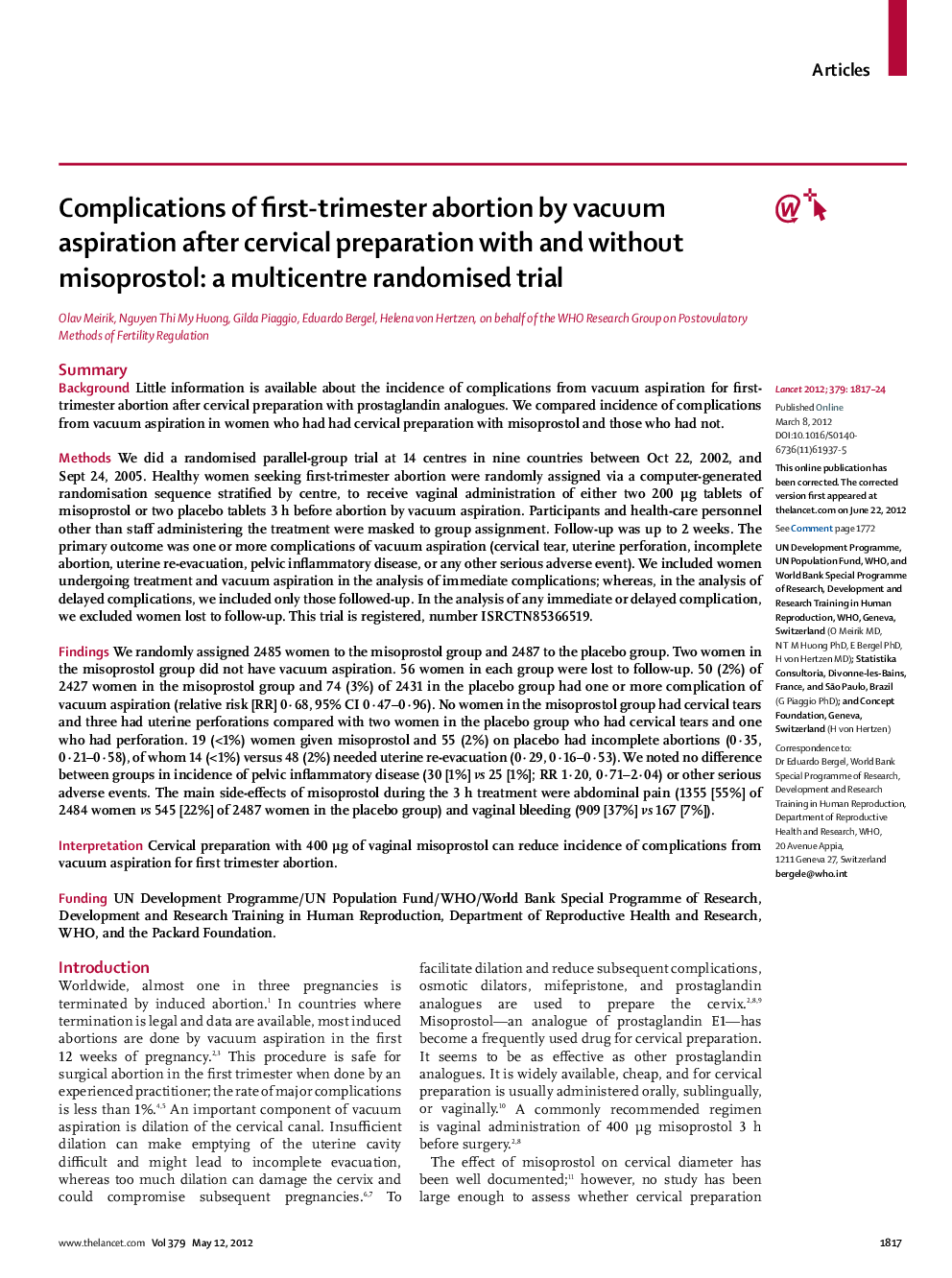| Article ID | Journal | Published Year | Pages | File Type |
|---|---|---|---|---|
| 3492883 | The Lancet | 2012 | 8 Pages |
SummaryBackgroundLittle information is available about the incidence of complications from vacuum aspiration for first-trimester abortion after cervical preparation with prostaglandin analogues. We compared incidence of complications from vacuum aspiration in women who had had cervical preparation with misoprostol and those who had not.MethodsWe did a randomised parallel-group trial at 14 centres in nine countries between Oct 22, 2002, and Sept 24, 2005. Healthy women seeking first-trimester abortion were randomly assigned via a computer-generated randomisation sequence stratified by centre, to receive vaginal administration of either two 200 μg tablets of misoprostol or two placebo tablets 3 h before abortion by vacuum aspiration. Participants and health-care personnel other than staff administering the treatment were masked to group assignment. Follow-up was up to 2 weeks. The primary outcome was one or more complications of vacuum aspiration (cervical tear, uterine perforation, incomplete abortion, uterine re-evacuation, pelvic inflammatory disease, or any other serious adverse event). We included women undergoing treatment and vacuum aspiration in the analysis of immediate complications; whereas, in the analysis of delayed complications, we included only those followed-up. In the analysis of any immediate or delayed complication, we excluded women lost to follow-up. This trial is registered, number ISRCTN85366519.FindingsWe randomly assigned 2485 women to the misoprostol group and 2487 to the placebo group. Two women in the misoprostol group did not have vacuum aspiration. 56 women in each group were lost to follow-up. 50 (2%) of 2427 women in the misoprostol group and 74 (3%) of 2431 in the placebo group had one or more complication of vacuum aspiration (relative risk [RR] 0·68, 95% CI 0·47–0·96). No women in the misoprostol group had cervical tears and three had uterine perforations compared with two women in the placebo group who had cervical tears and one who had perforation. 19 (<1%) women given misoprostol and 55 (2%) on placebo had incomplete abortions (0·35, 0·21–0·58), of whom 14 (<1%) versus 48 (2%) needed uterine re-evacuation (0·29, 0·16–0·53). We noted no difference between groups in incidence of pelvic inflammatory disease (30 [1%] vs 25 [1%]; RR 1·20, 0·71–2·04) or other serious adverse events. The main side-effects of misoprostol during the 3 h treatment were abdominal pain (1355 [55%] of 2484 women vs 545 [22%] of 2487 women in the placebo group) and vaginal bleeding (909 [37%] vs 167 [7%]).InterpretationCervical preparation with 400 μg of vaginal misoprostol can reduce incidence of complications from vacuum aspiration for first trimester abortion.FundingUN Development Programme/UN Population Fund/WHO/World Bank Special Programme of Research, Development and Research Training in Human Reproduction, Department of Reproductive Health and Research, WHO, and the Packard Foundation.
